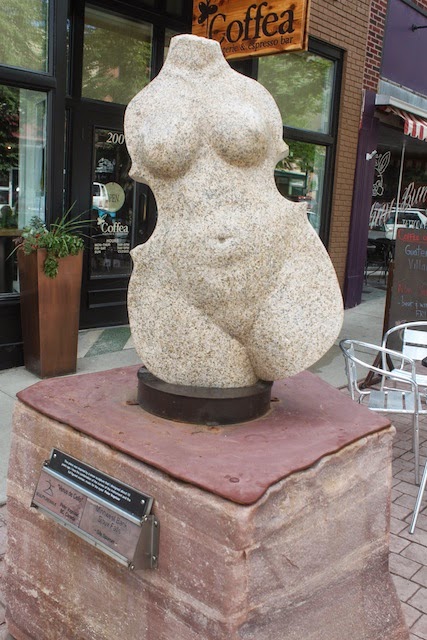Cecile is determined to make the most of her sabbatical, and I'm right there cheering her on. Or more accurately, traveling on.
Florence is now a fond, fond memory that has given way to an epic cross-country road trip. We are on our way from Columbia, MO, to Portland, OR, to visit our daughter, our son-in-law and our genetically superior grandchildren. Today we finished the first 500 of our 2,000-mile road trip.
 |
| Happy Gillis makes happy diners |
The road to Oregon is paved with food. At least that is part of our strategy. We have vowed to refrain from any chain eatery. Smart phones make our goal a bit more obtainable. We have a Diners, Drive-ins and Dives app, Yelp and the power of Google.
That first app is how we found Happy Gillis Cafe and Hangout in the Columbus Park area of Kansas City. Columbus Park was once infamous as a haven for the Show-Me branch of the Mafia. The mob is gone, but the food only got better.
Happy Gillis is a former corner store turned artsy cafe. Guy Fieri loved it with good reason. The sandwich menu was astonishing. Cecile had a bacon and date melt while I had a pork comfit sandwich. Find that at McDonald's.
We rolled north on I-29. A sign at Nebraska City caught our eye as a logical place to fulfill our other vow. You can't cross America just on a set of tires. We promised each other to walk at least two miles each day of our trip.
We got a mile in earlier walking the quaint streets of Columbus Park. But new we wanted to follow the footsteps of Lewis and Clark.
 |
| Explorers' selfie on the bluff |
The Lewis and Clark Missouri River Visitors Center sits atop a bluff overlooking a stretch of the Missouri River that challenged the Corps of Discovery in 1802. There are similar centers along the route from St. Louis to Astoria. We started our admiration of the explorers in reverse order while we lived in Oregon. It's now nice to read their log entries when they were still pumped up with excitement. By Clatsop, they were tired and cranky.
 |
| Giant prairie dog |
The upshot is that we knew most of the historical facts, but loved the wildlife displays. Can you imagine what it was like to first spot a buffalo? Or to catch the first cutthroat trout on record? My friend Jim Bird once said that the Lewis and Clark expedition was every bit as daring, every bit as great a scientific challenge and every bit as impossible as the first moon mission. And there are no grizzly bears on the moon.
 |
| Petrow's in Omaha |
The center's river overlooks and trails gave us another two miles of wandering before we set off again -- in search of food.
All the DDandD spots in Omaha seem to close after lunch, but Yelp took us to Petrow's Restaurant. It has fed countless Nebraskans since the early 50's, but proudly brags that "Over two billionaires served." Both Warren Buffet and Bill Gates have sampled the simple diner fare. I'm not sure if there really is a third billionaire to warrant the "over." The fried pork tenderloin was good, but not great. Great waited for the sour cream raisin pie.
And now we are in South Dakota's Sioux Falls for the night. I was here for a conference once and was enjoyably surprised to find it beautiful art haven that also boasts a butterfly zoo. Tomorrow morning we will drive down the the old downtown art's district, where sculptors are invited to place their works on street corners for a year of public admiration (and maybe a sale).
Then, like Lewis and Clark, we head west. On to Mt. Rushmore and the hills where Custer learned what happens when you really tick off the Sioux.





















